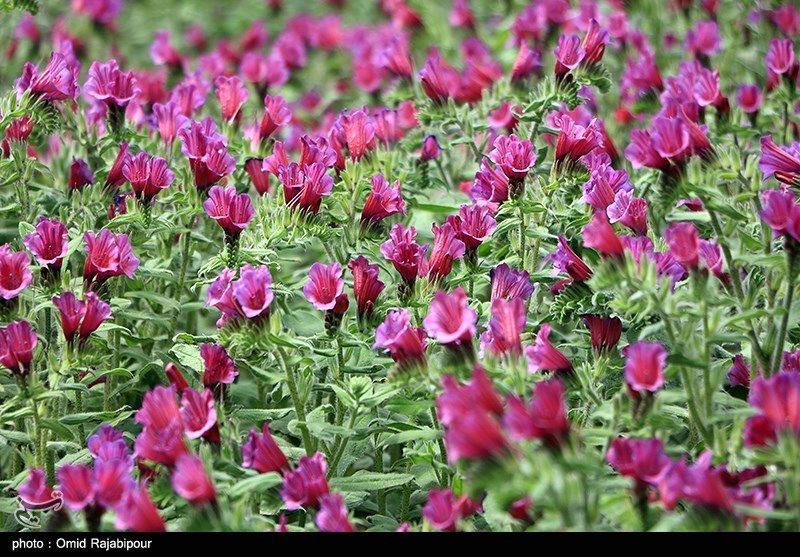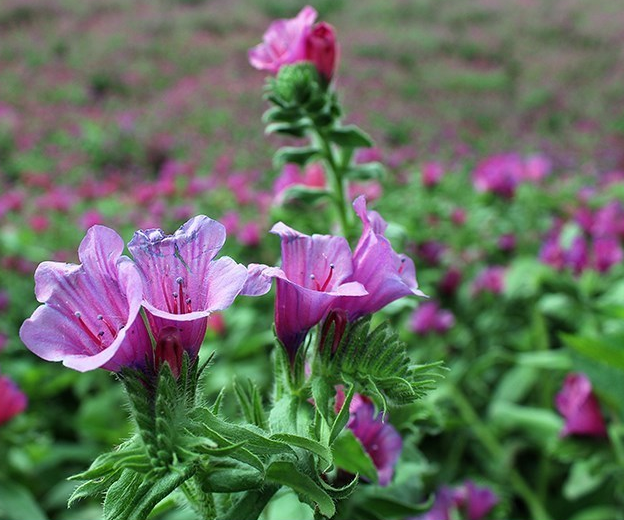Did you know seasonal changes affect your health, mood, and even your genes? Discover how to sync with nature and use...
Imagine a honey as clear as liquid glass, with a flavor so delicate it seems to whisper rather than shout. This is the magic of Borage Honey, a monofloral wonder derived from a plant with a legacy of courage and joy. But behind its simple name lies a complex identity—a tale of two plants often mistaken for one another, spanning from the mountains of Iran to the fields of Europe. This is the definitive story of the Starflower and its remarkable golden gift.
An Identity Clarified
Before we can appreciate the honey, we must first meet the flower. For centuries, a botanical confusion has surrounded the name "Borage" or "Gol Gavzaban." Though both plants belong to the Boraginaceae family, they are distinct cousins with different characteristics.
The Iranian "Gol Gavzaban"

Native to the Alborz mountains of Iran, Echium amoenum is what Iranians know as Gol Gavzaban (گل گاوزبان). Its flowers are typically larger, funnel-shaped, and deep purple. While it produces nectar for a local honey, it is not the plant responsible for internationally recognized Borage Honey.
The European Starflower

This is the true Borage, the source of the world's Starflower Honey. With its vibrant, sky-blue, star-shaped flowers, Borago officinalis has journeyed from the Mediterranean to gardens across the globe. It is this specific plant that gives Borage Honey its celebrated characteristics.
A Profile in Purity: The Sensory Experience
Appearance & Texture
Borage Honey is famous for being one of the clearest and lightest honeys in the world. Its color ranges from near-transparent to a pale, liquid straw. A key feature is its remarkably slow rate of crystallization, thanks to a high fructose content. This means it remains silky-smooth and pourable for an exceptionally long time.
Aroma & Flavor
The palate is where Borage Honey truly shines in its subtlety. Forget the robust, overpowering notes of darker honeys. Borage offers a clean, mild sweetness with delicate, refreshing hints of cucumber, melon, and a light herbal finish. It is the perfect choice for sweetening without overwhelming.
"I, Borage, bring always courage." — Old Welsh Proverb
The Legacy of a Courageous Plant
The Borage plant has been intertwined with human wellness for millennia. Roman soldiers drank Borage-infused wine for courage, and its Celtic name, borrach, means just that. Pliny the Elder wrote that it "maketh a man merry and joyful."
- Traditional Medicine: Historically used as a soothing remedy (a demulcent) for sore throats, a diuretic, and an anti-inflammatory. A tea from its leaves was used to break fevers by inducing sweat.
- Modern Wellness: Today, Borage is most famous for its seeds, which contain the highest known plant-based concentration of Gamma-Linolenic Acid (GLA). This Omega-6 fatty acid is prized in supplements for skin health and hormonal balance.
- A Note on Safety: While the leaves contain trace amounts of harmless Pyrrolizidine Alkaloids, these are not present in the nectar. Borage honey is therefore perfectly safe and non-toxic.
From Garden to Table
A Culinary Star
The edible flowers, with their cool cucumber taste, are a delight for chefs. They can be candied, frozen into elegant ice cubes, or tossed into salads and summer drinks for a splash of color. In Germany, the leaves are a star ingredient in the famous Frankfurt "Green Sauce" (Grüne Soße).
An Agricultural Ally
Borage is a master of companion planting. Its flowers attract a host of pollinators, boosting the yields of nearby crops.
- It deters pests like the tomato hornworm.
- It is known to enhance the growth of strawberries.
- Its deep taproot mines nutrients from the subsoil, enriching the surface when the plant decomposes, acting as a "green manure."
This creates a perfect symbiotic relationship: farmers who plant Borage for its valuable seed oil can partner with beekeepers. The bees provide superior pollination, increasing the farmer's yield, while producing a massive crop of premium, monofloral Borage Honey—a true win-win forged by nature.





















Latest comments